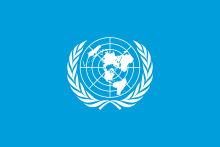User:Bernice Matos/sandbox

Effects of Global Water Scarcity[edit]
Water is a vital resource for human survival. Water is needed for the basic human necessities such as drinking, washing clothes, bathing, food preparations, agriculture, food production. Water scarcity is becoming a global problem and in some parts of the world its becoming a crisis. The demand of water has quadrupled in industries and domestic use in the 20th century[1]. Water shortage is not onlyhappening from normal day to day usage but also from bodies of water getting smaller an example of this would be the ice cap melting on mountain Kilimanjaro. There are the different levels of Water scarcity: Water stress is classified as when the annual water supplies drop below 1,700 m3 per person. Water Scarcity When annual water supplies drop below 1,000 m3 per person, then the population faces water scarcity. Absolute scarcity below 500 cubic meters per person[2]. Water stress occurs when the demand for water exceeds the available amount during a certain period or when poor quality restricts its use.[3] Water scarcity is mostly experienced by those impacted by the everyday use such as those in less developed countries.

Causes of Water Scarcity[edit]
Water Contamination[edit]
- Water contamination is considered the change in the fresh water quality. Water can be contaminated with feces, garbage, animal excretion, radioactive material and chemicals substances such as pesticide, detergents, acids, metals, fertilizers, and antibiotics. About 1.8 billion people use water from contaminated sources such as feces putting them at risk for diseases such as cholera, polio, dysentery, typhoid. [4] Diseases transferred through water and with prevention and education can be prevented or at least minimize.
Climate Change[edit]
- Climate change can also affect how much water is available due to weather changes and condition such as droughts, little to no rain, hurricanes, extreme temperature change. Some of the environmental climate change occurring today can be attributed to the human contribution and the greenhouse effect. Climate change affects the distribution water. Global warming melts fresh water ice caps that then melt into the sea. This then increases the atmospheric water.
Increasing Population[edit]
- The population of 200 years ago was about 1 billion people and today's total population in the world is about 7.6 billion people.[5] The population has doubled in the last 50 years, the use of water from the years 1040 to 1975 has tripled. In Africa the population is 1.2 billion and 1.2 billion people in the world suffer of water shortage today.
Agriculture & Industrial Emission[edit]
- About 7.1 trillones gallons of water are used yearly for agriculture.
Access to water[edit]
EDC & LDC[edit]
Deforestation[edit]
Economic & Infrastructure[edit]

Ways to improve this crisis[edit]
United Nations[edit]
(~~~~) Bernice Matos 00:00, 6 October, 2018 (UTC)
 | This is a user sandbox of Bernice Matos. You can use it for testing or practicing edits. This is not the sandbox where you should draft your assigned article for a dashboard.wikiedu.org course. To find the right sandbox for your assignment, visit your Dashboard course page and follow the Sandbox Draft link for your assigned article in the My Articles section. |
- ^ 1964-, Grant, Richard (2015). Africa : geographies of change. Oxford University Press. ISBN 9780199920563. OCLC 900624089.
{{cite book}}:|last=has numeric name (help)CS1 maint: multiple names: authors list (link) - ^ Rourke, John T., and Mark A. Boyer (2012). International Politics on the World Stage.
{{cite book}}: CS1 maint: multiple names: authors list (link) - ^ "Water stress". European Environment Agency. Retrieved 2018-10-07.
- ^ "Quality and Wastewater | UN-Water". UN-Water. Retrieved 2018-10-07.
- ^ "World Population Growth". Our World in Data. Retrieved 2018-10-07.
